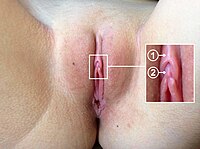
Photo from wikipedia
Ecologists and evolutionary biologists have been looking for the key(s) to the success of scyphomedusae through their long evolutionary history in multiple habitats. Their ability to generate young medusae (ephyrae)… Click to show full abstract
Ecologists and evolutionary biologists have been looking for the key(s) to the success of scyphomedusae through their long evolutionary history in multiple habitats. Their ability to generate young medusae (ephyrae) via two distinct reproductive strategies, strobilation or direct development from planula into ephyra without a polyp stage, has been a potential explanation. In addition to these reproductive modes, here we provide evidence of a third ephyral production which has been rarely observed and often confused with direct development from planula into ephyra. Planulae of Aurelia relicta Scorrano et al. 2017 and Cotylorhiza tuberculata (Macri 1778) settled and formed fully-grown polyps which transformed into ephyrae within several days. In distinction to monodisk strobilation, the basal polyp of indirect development was merely a non-tentaculate stalk that dissolved shortly after detachment of the ephyra. We provide a fully detailed description of this variant that increases reproductive plasticity within scyphozoan life cycles and is different than either true direct development or the monodisk strobilation. Our observations of this pattern in co-occurrence with mono- and polydisk strobilation in Aurelia spp. suggest that this reproductive mode may be crucial for the survival of some scyphozoan populations within the frame of a bet-hedging strategy and contribute to their long evolutionary success throughout the varied conditions of past and future oceans.
Journal Title: Scientific Reports
Year Published: 2021
Link to full text (if available)
Share on Social Media: Sign Up to like & get
recommendations!